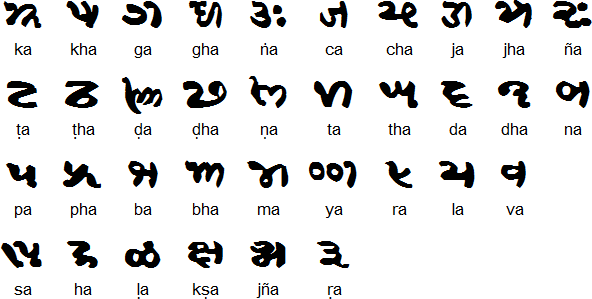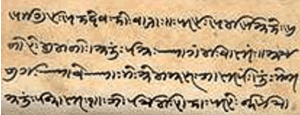According to the Nizari Ismaili tradition Khojki was created by Pir Sadardin, an Ismaili missionary who worked with the Hindu Lohana community of Sind during the 15th century. Khojki first appears in manuscripts in around 1737 and was thought to have become distinct from the Landa alphabet during the 16th century.
Many books and lithographs in Khojki were published in the 20th century after metal types for Khojki were produced by Laljibhai Devraj.
The name Khojki comes from the Sindhi word khojā, from the Persian word خواجہ (ḵẖwājah - master, lord). Literally it means "of the master".
Notable features
- Type of writing system: abugida or syllabic alphabet
- Direction of writing: left to right in horizontal lines
- Used to write: Sindhi, Punjabi, Gujarati, Urdu, Arabic, Persian and other languages
Khojki alphabet
Vowels and vowel diacritics

Consonants

Sample text

Source: http://ismailimail.wordpress.com/2011/01/29/khojki-script/
Links
Information about the Khojki alphabethttp://en.wikipedia.org/wiki/Khojki
http://www.ismaili.net/granths/script.html
http://www.iis.ac.uk/view_article.asp?ContentID=104533
http://ismaili.net/heritage/files/khojki-unicode.pdf









.jpg)
.jpg)


.jpg)





0 comments:
Post a Comment
Note: Only a member of this blog may post a comment.